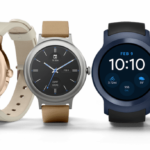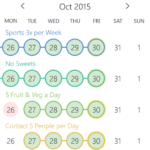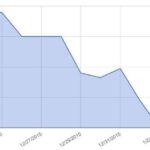Reading Time: 2 min Last week Google announced Android Wear 2.0, the first major upgrade to their watch software. Google wrote an in-depth blog post that covers all of the new features, and this video shows them off a bit: Similar to the iPhone vs Android battle, Google released their watch first in 2014 (and Apple followed suit the […]
Health
Track your habits with Habitbull
Reading Time: 2 min I’m the kind of guy that likes to track things. We have many systems at GreenMellen for tracking work and progress, I wear a FitBit to track my steps, I have a GPS watch to track my runs, etc. However, there are a lot of other habits that I could track, so I started looking […]
Daily Burn for great workouts
Reading Time: 2 min I’ve done P90X off and on for a few years, and I run outdoors periodically, and walk most evenings for a while on our treadmill. However, I started doing Daily Burn a few weeks ago (since pretty much everyone else at GreenMellen was already doing it) and I’m really enjoying it. P90X gives a great […]
Wilt Chamberlain could have been better — can you?
Reading Time: 4 min Malcolm Gladwell has produced some great content over the years, and a recent podcast of his had some very eye-opening thoughts. Malcolm spent most of the podcast with Rick Barry, a basketball player who famously shot his free throws underhanded (“granny style”), as seen here: Wilt Chamberlain, one of the greatest basketball players of all […]
Whole 30, day zero
Reading Time: < 1 min My wife and I are tackling Whole30 starting tomorrow, and it should be interesting. The concept is pretty brilliant, but will be painful. In short, you need to consume no added sugar of any kind (real or fake), no alcohol, no grains, no legumes and no dairy. Wow! After the 30 days are over, you’re […]




